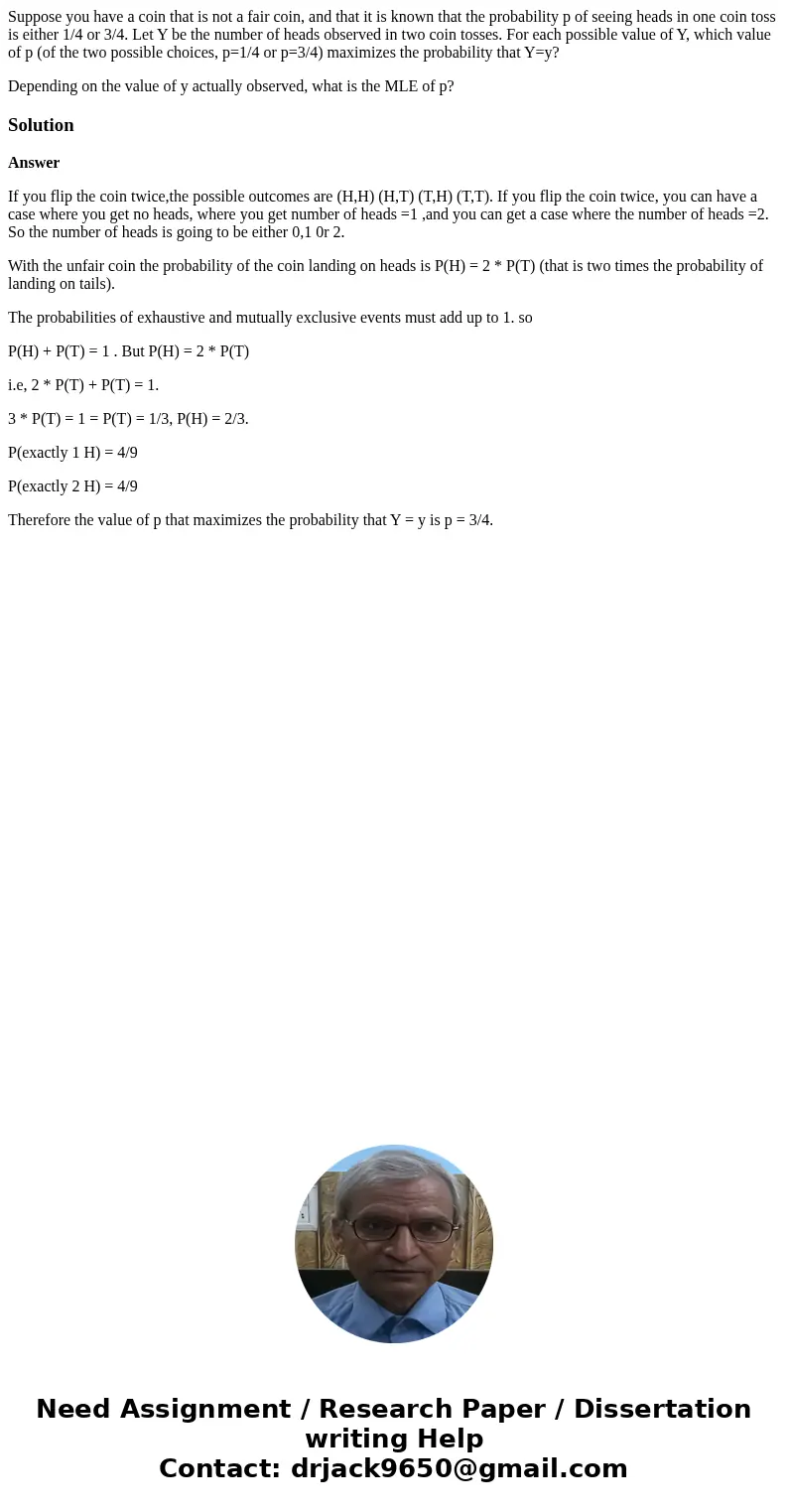Suppose you have a coin that is not a fair coin and that it
Suppose you have a coin that is not a fair coin, and that it is known that the probability p of seeing heads in one coin toss is either 1/4 or 3/4. Let Y be the number of heads observed in two coin tosses. For each possible value of Y, which value of p (of the two possible choices, p=1/4 or p=3/4) maximizes the probability that Y=y?
Depending on the value of y actually observed, what is the MLE of p?
Solution
Answer
If you flip the coin twice,the possible outcomes are (H,H) (H,T) (T,H) (T,T). If you flip the coin twice, you can have a case where you get no heads, where you get number of heads =1 ,and you can get a case where the number of heads =2. So the number of heads is going to be either 0,1 0r 2.
With the unfair coin the probability of the coin landing on heads is P(H) = 2 * P(T) (that is two times the probability of landing on tails).
The probabilities of exhaustive and mutually exclusive events must add up to 1. so
P(H) + P(T) = 1 . But P(H) = 2 * P(T)
i.e, 2 * P(T) + P(T) = 1.
3 * P(T) = 1 = P(T) = 1/3, P(H) = 2/3.
P(exactly 1 H) = 4/9
P(exactly 2 H) = 4/9
Therefore the value of p that maximizes the probability that Y = y is p = 3/4.

 Homework Sourse
Homework Sourse